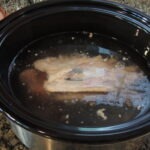
With all the crazy variations of hummus available these days, we started wondering what the difference is between hummus and bean dip. Here’s what we learned:
“Hummus” comes from the Arabic word for chickpeas. Hummus bi Tahina means chickpeas with tahini (sesame paste), and is the full name of what is generally called hummus. Traditional hummus is made with chickpeas, tahini, olive oil, lemon juice, garlic and salt.
There’s much debate about the origins of hummus (Israel, Egypt, Syria, Lebanon, etc.), so we’ll be politically correct and just go with “Middle Eastern.” There are many optional seasonings and garnishes one can use, depending somewhat on regional differences, or simply the cook’s whim. Classic hummus is simply garnished with olive oil, usually poured in a center indentation. Often, you’ll see a few whole chickpeas or some herbs sprinkled on top as well. Other popular garnishes include fire roasted red bell peppers, caramelized onions, tomatoes, cucumbers, pine nuts, parsley, cilantro, paprika, or sumac.
In the Middle East, hummus is usually served with flatbreads like pita. In the US, you’ll often see it served with raw vegetables, crackers, or chips. Hummus is typically served in the Middle East as a side to falafel or meat and vegetable dishes. We like it on a salad or in a sandwich.
Today, you might see black bean hummus, edamame hummus, white bean hummus, etc., but technically, it’s not hummus if it doesn’t contain hummus (chickpeas). Since today’s “hummus” is actually hummus bi tahina, we believe it should also be made with tahini. That’s why we call similar recipes dip, not hummus. (See Black Bean Dip.)
We also learned in our research that there is some debate over the proper pronunciation of hummus. In the US, we pronounce it huh-miss. In the Middle East, it sounds a little more like hoo-moose. Here’s a link to hear it spoken both ways. You choose.
Hummus is a healthful snack, filled with fiber, protein, good fats and heart-healthy garlic. It’s a good source of vitamins C, B6 and folate, as well as many minerals like calcium, manganese, magnesium, iron, and phosphorus. Wherever it originated, we’re just glad to have the recipe: Classic Hummus. Eat up!
References:
https://en.wikipedia.org/wiki/Hummus
http://nutritiondata.self.com/

